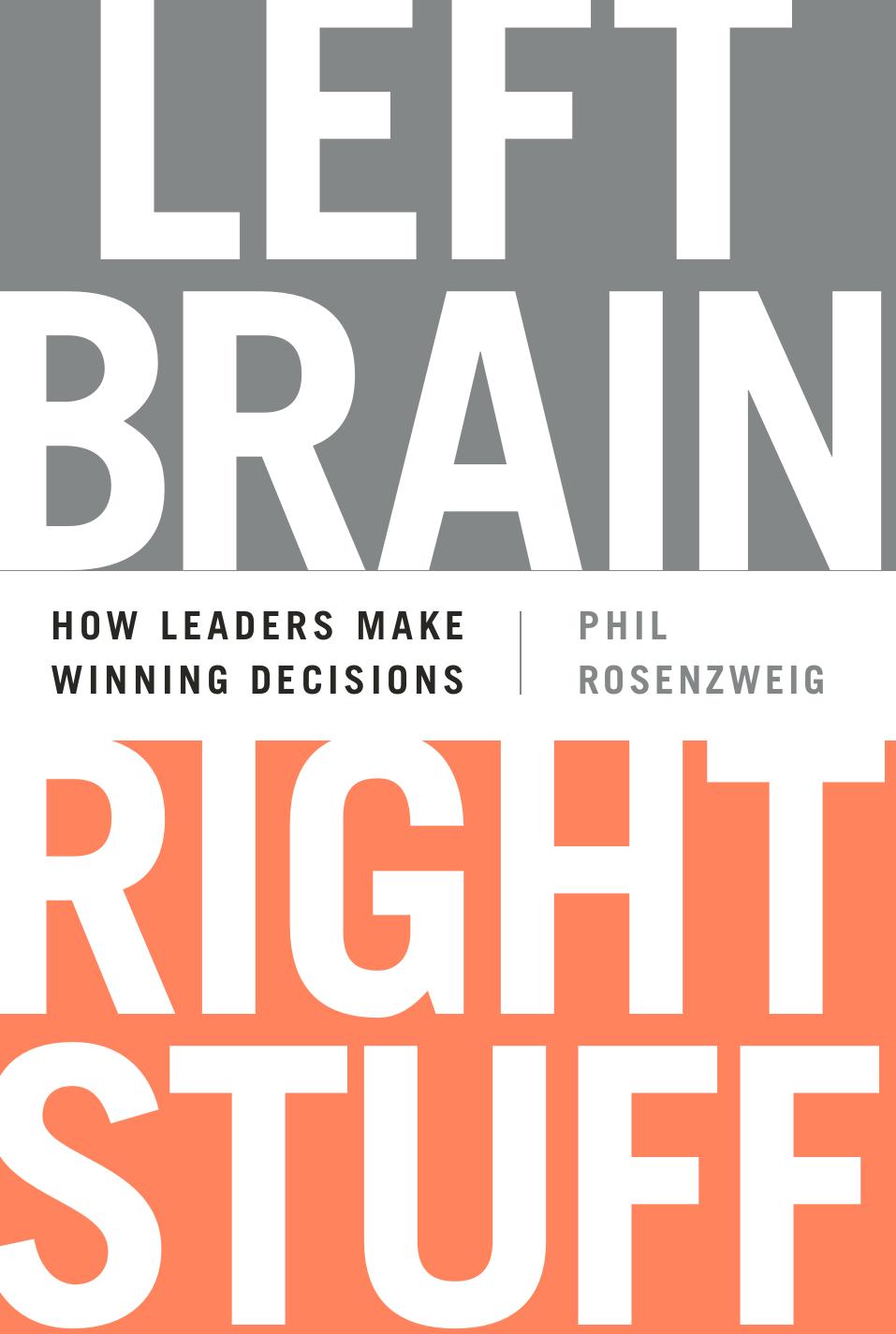Left Brain, Right Stuff: How Leaders Make Winning Decisions by Phil Rosenzweig

Author:Phil Rosenzweig [Rosenzweig, Phil]
Language: eng
Format: mobi, pdf
ISBN: 9781610393089
Publisher: PublicAffairs
Published: 2014-01-06T14:00:00+00:00
WHY BILLY BEANE AND JOE MORGAN ARE BOTH RIGHT
Given how widespread the use of statistics in baseball has become, it’s easy to forget the passions that were unleashed when Michael Lewis’s Moneyball was published. At that time, the notion that players could be evaluated by statistical models touched off something of a holy war. Players, managers, and scouts were incensed. They insisted that player performance couldn’t be reduced to figures. Statistics don’t capture the intangibles of the game, they argued; numbers don’t grasp the subtle human qualities that make players great.
Lewis, whose background was in finance, concluded that baseball was little more than a glorified social club, a bunch of good ol’ boys with shared values forged by long hours of batting practice, bullpen chatter, and chewing tobacco. It was a tight-knit fraternity that jealously guarded its traditions. As Lewis observed, the growing emphasis on statistics “drove baseball’s clubby traditionalists crazy. . . . Members of the Club flipped out. Over and over during the 2003 season I found myself facing one reaction from the reading public and another from the Club.”16
At one level, skepticism about statistical analysis reflected an unwillingness to accept new ideas. Scouts and coaches no doubt felt threatened by the growing use of statistics. (It turned out they had good reason to worry: by 2011, more than one hundred scouts had lost their jobs, their opinions and hunches no longer needed.17) But there was a deeper issue, one that touches on the difference between making predictions and influencing outcomes.
Of all Billy Beane’s critics, none was more outspoken than Joe Morgan, a star player from the 1960s to the 1980s and one of the best second basemen of all time.18 Morgan was also, according to Michael Lewis, the de facto social chairman for the club, a guardian of baseball tradition and a self-appointed arbiter of what was acceptable. And to Joe Morgan, the growing use of decision models was definitely not acceptable. When Morgan talked about Moneyball, Lewis wrote in a 2004 article for Sports Illustrated, “the tone of the discourse, already unhinged, came untethered from reality.” Something about the use of statistics was deeply upsetting. “I don’t think that statistics are what the game is about,” Morgan insisted. “I played the Game. I know what happens out there. . . . Players win games. Not theories.” The incomprehension was mutual. To adherents of statistical analysis, Joe Morgan seemed hopelessly naïve. Reporters dismissed him as a head-in-the-sand Luddite, a simpleton who was unable to absorb new ideas or accept the truth. Tommy Craggs of SF Weekly mused: “Alas, I realize, Morgan will never get it. The only comfort is that this sort of argument will be a relic within a matter of years. Morgan is in the middle of a paradigm shift and doesn’t even know it.”19
But Joe Morgan wasn’t entirely wrong. He understood that players don’t predict performance; they have to achieve it. As Brian Wilson said: You make what’s going to happen. For that, all the statistical analysis in the world is insufficient.
Download
Left Brain, Right Stuff: How Leaders Make Winning Decisions by Phil Rosenzweig.pdf
This site does not store any files on its server. We only index and link to content provided by other sites. Please contact the content providers to delete copyright contents if any and email us, we'll remove relevant links or contents immediately.
The Art of Thinking Clearly by Rolf Dobelli(10328)
Mindhunter: Inside the FBI's Elite Serial Crime Unit by John E. Douglas & Mark Olshaker(9266)
Change Your Questions, Change Your Life by Marilee Adams(7689)
Nudge - Improving Decisions about Health, Wealth, and Happiness by Thaler Sunstein(7660)
Mastermind: How to Think Like Sherlock Holmes by Maria Konnikova(7281)
The Power of Now: A Guide to Spiritual Enlightenment by Eckhart Tolle(5682)
Men In Love by Nancy Friday(5197)
Altered Sensations by David Pantalony(5071)
Factfulness: Ten Reasons We're Wrong About the World – and Why Things Are Better Than You Think by Hans Rosling(4715)
The Confidence Code by Katty Kay(4222)
Thinking in Bets by Annie Duke(4186)
Man and His Symbols by Carl Gustav Jung(4098)
The Worm at the Core by Sheldon Solomon(3454)
Why Buddhism is True by Robert Wright(3425)
Liar's Poker by Michael Lewis(3416)
Three Women by Lisa Taddeo(3393)
The Inner Life of Animals by Peter Wohlleben(3286)
Descartes' Error by Antonio Damasio(3249)
How Music Works by David Byrne(3235)
